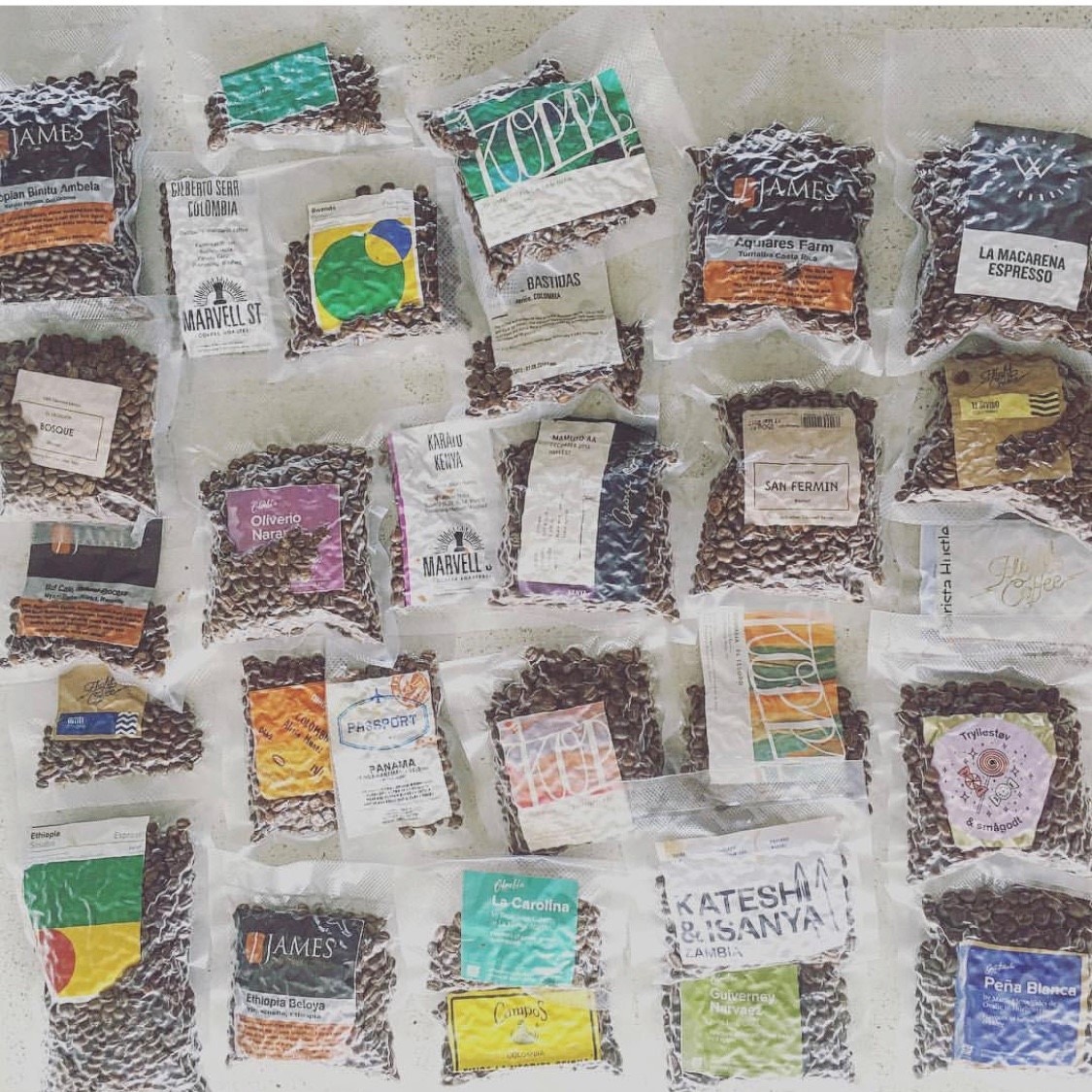
Today is a strange day, to say the least. If you’re reading this a year or more from now, hello from the middle of the coronavirus outbreak. I hope you’re doing well! Let’s talk about something that’s a big help in both our timelines: freezing coffee.
As many of us are currently camped out at home and limiting trips to the store or cafe, I want to share some tips on getting the best possible freshness from your coffee. Whatever coffee you have on hand, let’s keep it tasting delicious. You deserve to get the most out of your coffee, no matter what!
Why Should I Freeze Coffee at Home?
Renowned specialty coffee companies all over the world are now utilizing freezers to extend coffee freshness. George Howell Coffee has done it since 2001. Besides freezing their green coffee, they also freeze roasted. Says Rachel Apple, Quality Control Manager at George Howell, “We pre-portion out single servings of whole coffee for our pour-overs and freeze them. We then grind straight from the freezer.”
But this practice isn’t just for cafes. Alexander Mills, a coffee blogger in Niagara Falls, Ontario, started freezing coffee at home last year. Says Alexander, “I'm an advocate for enjoying coffees past the mythical four-week mark, but the fact of the matter is that coffee ages with every passing moment. So I started freezing. This ensures that all my coffees are fresh and minimizes waste.”
Tom Finch, founder of UK-based Manchester Coffee Archive, is a leading expert on home coffee freezing. Tom explains, “Freezing slows the aging process right down and the process itself doesn't seem to have any noticeable effect on taste.”
The best part? All you need to get started is a bag of coffee and a freezer.
How Should I Freeze Coffee at Home?

Wilson Husin, a software engineer in the Bay Area, has frozen coffee at home for a year and a half. If his coffee is in an unopened sealed bag, he just sticks it straight in the freezer. After opening, the coffee bag is returned to the freezer inside a simple Ziploc - which Wilson keeps reusing indefinitely. Wilson typically drinks his frozen coffee within 6 months and finds the quality extremely consistent.
Alexander also used Ziploc bags when he first started freezing coffee. “I used my mouth as a vacuum sealer!,” says Alexander. “I put a stainless steel straw into the bag and sucked as much air out as I could before I quickly sealed the bag. It actually works pretty well and it's my recommendation to most people who want to give freezing coffee a try!”
Alexander now uses a home vacuum sealer, as does ER nurse Paden Bergdall of Sacramento, CA.
“I’ve been freezing coffee for about 6 months now,” says Paden. “I got a FoodSaver at Costco and have been enamored with it since. I usually use the bags that you can buy and cut to size, as I like to freeze small doses and some larger ones. I think it’s a great way for people to save coffees they enjoy past what their typical shelf life would be and not have to buy coffee as often.”
Home vacuum sealers typically retail at $50-$100, so if the investment doesn’t make sense for you right now, rest assured you can still get great results with a straw and a freezer bag.
What Kind of Freezer Do I Need?

The only consideration to make: keep your coffee sealed and away from strong-smelling food. If your approach to sealing is more casual, be aware that your coffee could pick up food odors.
Michael Cameron, Special Projects Manager at St. Ali in Melbourne, AUS, learned this the hard way before he bought a dedicated coffee freezer. “I’d had coffees tasting of chicken stock, peas, and a particular nasty fishy shot when the seal had failed.”
Generally speaking, the better the seal, the fresher coffee. Exposure to air - even if it’s not fish air! - is the big threat here. Tom Finch reiterates this point. “It's important to make sure the container is well sealed, since that can impact on the quality over time.”
How Do I Brew with Frozen Coffee?
Simply take your coffee out of the freezer, grind it, reseal it, and put it back. It’s ok to grind the coffee while it’s frozen - this will actually result in a more uniform particle size and a tastier brew. And don’t worry about your coffee thawing and re-freezing. Says Michael Cameron, “Coffee isn’t like raw chicken. You can take it out of the freezer and put it back.”
What Else Do I Need to Know?

Keep it in the bag.
“When I vacuum seal,” says Alexander Mills, “I try to keep the coffees in their original bags inside of whatever I'm freezing them in. That helps to create an additional barrier against freezer air!” This is also a great practice if you’re using the Ziploc-and-straw method.
Think about roast age.
“Don’t vac seal coffee really fresh off roast,” says Lewis Maillardet, International Business Development at Mavam Espresso. “Wait until it tastes good.” Michael recommends aging to 7-10 days off roast before you freeze.
Try out different containers.
If you want to reduce the plastic waste associated with vacuum sealing, experiment with different containers! Lewis freezes larger amounts of coffee in vac-sealed bags, and uses pop-top drams for smaller doses. Just make sure your container has a good seal and try to fill it up as full as possible to limit oxygen exposure.
Have fun!
“See what works,” Wilson Husin advises. “There is no absolute rule on this as far as I know.” Freezing coffee is meant to increase your enjoyment of coffee! So feel free to experiment, try new things, and figure out what’s best for you. “Once you get started,” says Paden Bergdall, “You’ll be hooked.”


